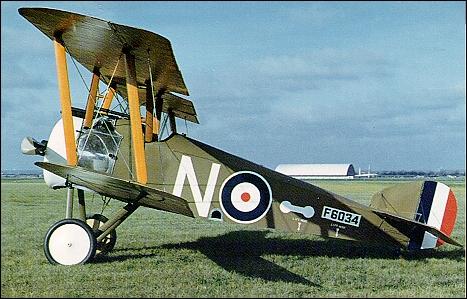|
The Sopwith Camel, well-known to readers of the famous "Peanuts" cartoon strip, was the most successful fighter plane of WWI. It shot down more enemy aircraft than any other fighter of any of the warring nations. However, because of its tricky handling characteristics, more men lost their lives while learning to fly it than died while using it in combat. The Camel was produced in Great Britain and went into action in June 1917 with the 70 Squadron ,Royal Flying Corps and 4 Squadron, Royal Naval Air Service. In the hands of an experienced pilot, it was highly maneuverable and at its best combat altitude of 12,000 feet, it was very difficult to defeat in a dogfight. Two U.S. Air Service squadrons, the 17th and 148th, used the Camel in combat while assigned to British forces during the summer and fall of 1918. |
 |
|
|
Such famous U.S. pilots as George Vaughn (our nation's second-ranking Air Service ace to survive the war). Elliot White Springs, Errol Zistel and Larry Callahan were members of the 17th and 148th. A third U.S. unit, the 185th Aero Squadron, used the Camel as a night fighter on the American Front during the last month of the war. Although 5,490 Camels were produced, very few remain in existence today. The Camel on display was built by U.S. Air Force personnel from the original WWI factory drawings and was completed in 1974. It is painted and marked as the Camel flown by Lt. George A. Vaughn, Jr., 17th Aero Squadron. SPECIFICATIONS Span: 28 ft. Length: 18 ft. 9 in. Height: 8 ft. 6 in. Weight: 1,482 lbs. maximum Armament: Two Vickers .303-cal. machine guns Engine: Clerget rotary of 130 hp. PERFORMANCE Maximum speed: 112 mph. Range: 300 miles Service Ceiling: 19,000 ft.
|
||